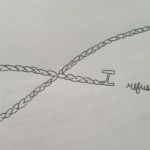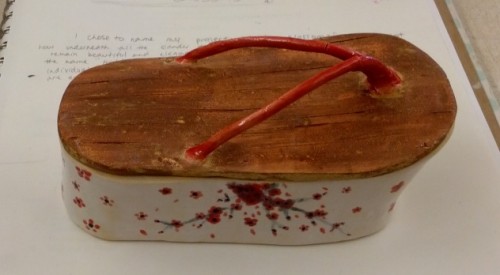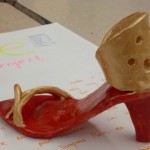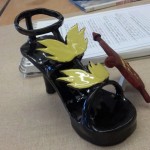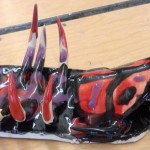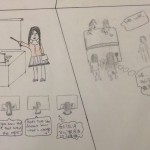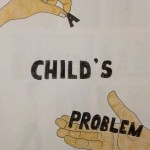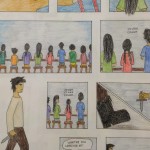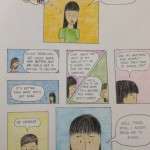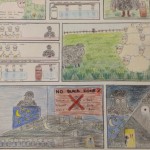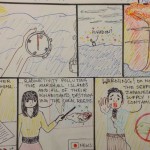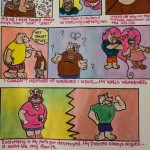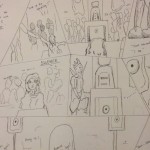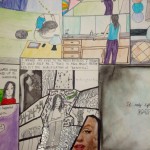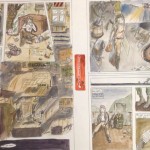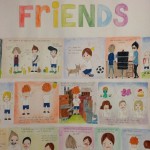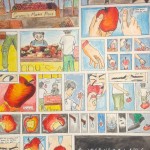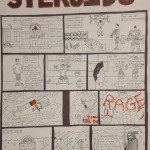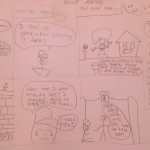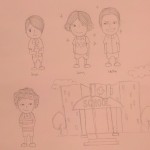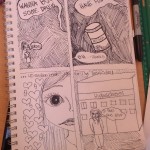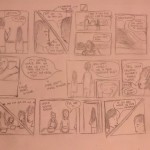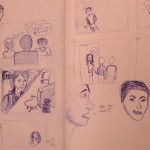
Before I started this project with the class, I was a bit hesitant as to how the class would receive this project. Rooted in the theme of social justice and accepting diversity, I decided to introduce a tattoo design unit. My interest in tattoo design stems from designing my own. I spent many months thinking about what is meaningful to me and did plenty of research to find the perfect images for it. I spent many hours drawing the tattoo and I am very proud of it. Through the experience of designing my own tattoo, I can say that I am a changed person. Before delving into this project, I’d like to share my own experience being a tattooed individual.
I got my sleeve as an adult. It was certainly not a spontaneous event. I spent many days thinking about what I want on it and I felt ready to attempt it. For many years, tattoos have always intrigued me but I was never serious about getting one. It just “wasn’t me”. I am usually told that I don’t look like a person who would have tattoos. Yes that is true. Even I agree with that because we always believe the generic stereotypes that are prevalent in today’s society. Despite them being more mainstream, tattoos are still an area of reservation for me. I don’t usually go around flaunting my work but will gladly talk about the concept when asked. I don’t do it for attention (in fact I dislike the attention. Kind of ironic considering how noticeable it is on my arms). I did it for me at time when I felt like I had to. I was compelled to and put much thought into what I would get and what it should look like. I worked for months with my tattoo artist to design the perfect sleeve. It is now a part of me and I am proud of my accomplishment. Although there are days when I just wish to hide it (because I can’t be bothered with people staring and pointing) I am still proud of the spiritual journey I took to design it myself. When the experience itself was over, I felt a sense of accomplishment. I did it. All those painful hours in the chair are finally over.
How does this relate to teaching? Well, I’ve been judged as a certain type of person: one that is quiet and conservative…and I am. However, I am also an individual with a unique personality. When I roll up my sleeves, suddenly their perceptions of me are shattered and they cannot believe I am hiding such markings that are generally reserved for the “gangsters, bikers, punks, criminals…etc”. Stereotypes can work against you or for you. In this case, as a teacher and in a position of authority, how can I do this to myself? Individuality and self expression is appreciated in my classroom. I practice the acceptance of diversity and this is exactly what I want to exhibit. I want them to understand that you cannot judge a person just by their appearance.
For this project, I made it very clear that they are NOT to get tattoos and that I am in no way promoting the use of tattooing to express individuality. I emphasized that this project is more about self expression than it is about tattoos. It does not matter to me if they don’t want to get a tattoo. The challenge comes from discovering their own interests, motivations, and symbols that would take significance in a “permanent” tattoo design. Assuming that this would be a permanent design on you, what text or imagery would you absolutely use or not use. I had some students tell me they didn’t want a tattoo but it does not excuse them from not doing my project. I had to reiterate many times that this is project about themselves and not so much the concept of tattooing.
I wish I had more time with them on this project but overall, I am pleased with the results. Here are some examples.








